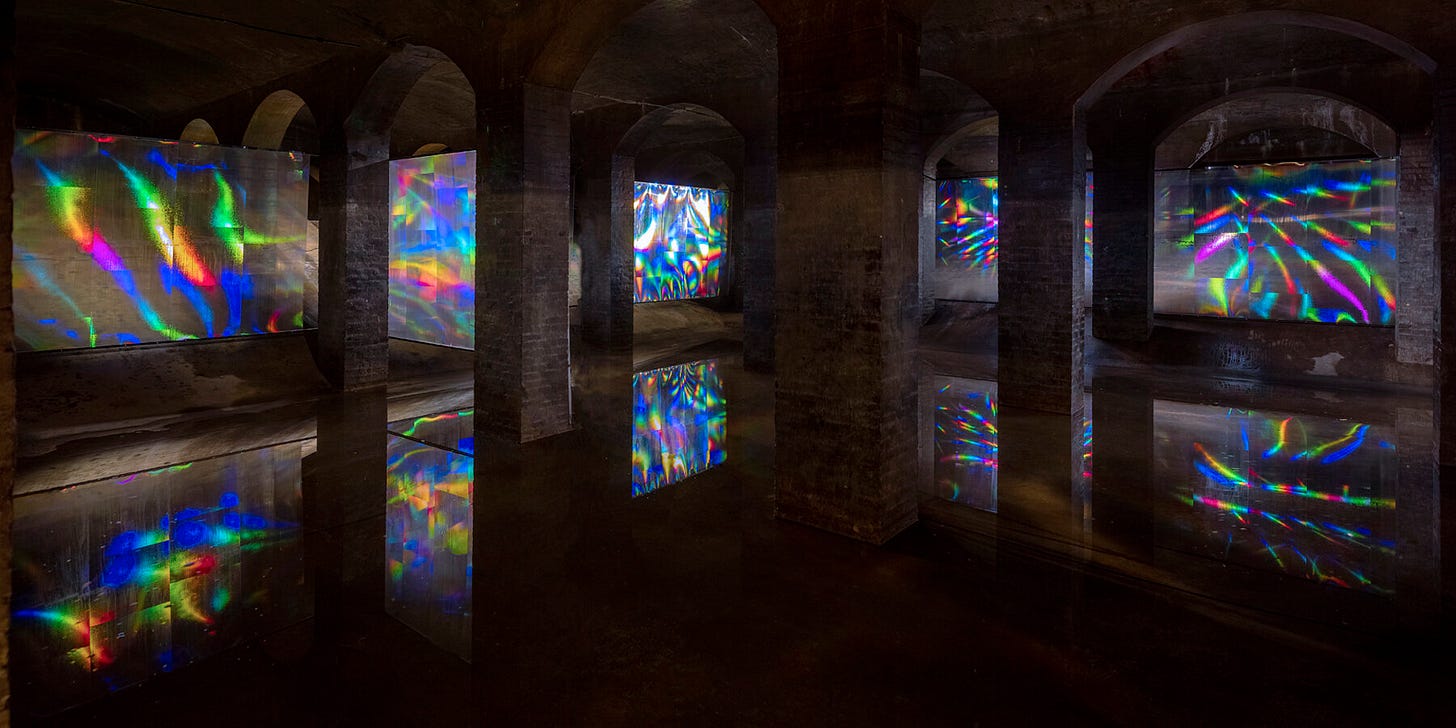AI vs. AGI, AI vs. Human Badges, and (AI-free) Roundup #24
Nestled between two heady AI topics, we open two tabbed drinks and stream our underwear while we wait for uninfectable organisms to be sent to orbital laboratories.

For a while, it was robots. They seeped into every issue of The New New. They will be back. It’s inevitable.
For now, we continue with the other side of the “the future of humanity” coin and dig into near-future AI-centric topics. With such a heavy helping of AI, the roundup rolls human (and dog) only.
Let’s go.
One Big Thing
Generative AI vs. AGI
While Generative AI is mindblowing, we are still far from the pinnacle achievement—Artificial General Intelligence (AGI).
We are in the era of “sprinkle some AI on everything.” For this, we can thank two things. First are video games and their graphics processing units (GPU). With architectures remarkably like those of a neural net, GPUs have made computing power possible for Generative AI. The second thing is all the “killer apps” that have hit the market—Open AI’s ChatGPI and DALL·E, Midjourney, and on. These two forces started picking up steam in 2017. Five years later, here we are.
But, through all this wonder and hype, we still have a long way to go from Generative AI to AGI.
What’s the difference between the two?
Generative AI is focused on performing specific tasks—it is all about productivity improvements. AGI brings human-level cognitive abilities—it can understand or learn any intellectual job that a human being can.
What’s missing? What has to be added for machines to reach AGI?
Long-term Memory and Continual Learning
Personalization
Planning
Transparency
Conceptual Leaps
It may not take machines (and the people making them) too long until we reach AGI. Microsoft Research has published a report saying GPT-4 could reasonably be considered a kind of early-stage proto-AGI. While Google DeepMind’s CEO says AGI may be achievable in the next few years.
Until then, we all need to keep developing our prompt engineering skills. Plus, when you get good enough at it, you can sell your work in brand new Prompt Marketplaces. The race is accelerating.
The Roundup
Minds, Bent
Uninfectable Organisms, genetically engineering a bacteria to be totally immune to viruses
Orbital Laboratories, working in microgravity to create new pharma products
Thoughts-to-Words, using a noninvasive brain-computer interface capable of converting a person’s thoughts into words
Time, Focused
The Hat, a no longer theoretical tile shape that can cover a surface without repeating
Time Currency, the farther you drive, the more you save during IKEA Dubai’s “Buy With Your Time” campaign
Decarb Bros, working against doomerism with climate technology solutions
Social, Quirked
Blue Checkmarks Everywhere, Google’s Gmail follows in LinkedIn’s verification footsteps
Streaming Undies, looking to be the savior for the world’s dwindling libidos by turning under-garments into a streaming platform
Skeets, it is what they call “posting” on Bluesky, Jack Dorsey’s decentralized Twitter-like app
Food, Experienced
Two Tabs, precisely controlling the liquid-to-foam ratio of your future drink
Doggy Dim Sum, Hong Kong’s iconic dim sum dining experience is now catering to ‘pawrents’
Operatic Escapism, taking inspiration from the hedonistic abandon and unrestrained extravagance of ancient Greece (I recently dined at the restaurant in the spotlight in this piece, Bacchanalia London, and it was all of this—and more)
What To Watch For
AI Contribution Badges
As AI upends the realms of creativity and productivity, new rating systems, scales, and labels are emerging.
The faceless magic of generative AI, with its creative tendencies scaring Hollywood screenwriters and deepfake abilities worrying politicians, requires contribution labeling. Much like nutrition labels on our groceries, global industries are wrestling with how to transparently measure authenticity and originality in a mixed AI/human collaboration world.
Today, new badge systems are emerging. Not by AI has introduced badges for work that are written, painted, and produced solely by humans.
As we continue to mix the ingredients of AI into our creative processes, I expect these badges will become more prominent—and more nuanced.
Bringing a Favorite Back
Last summer brought a hot issue of The New New. The roundup within Issue 16 is (probably) my favorite—and most referenced—ever.
Why?
Issue 16 is where we first learned that, according to Google, young people are not Googling—they start their searches on Instagram and TikTok. The issue also put pig-butchering and nap boxes into my lexicon while showing off precisely sculpted sound waves, perfect chocolate, anti-idyllic places, and micro-swarms of nanobots. We also learned about the importance of punctuality today, so (insert joke about it not being too late here) and then jump on back to this still-fresh roundup.
The New New brings together the important and the irreverent across emerging experiences, culture-driven experiments, and scoops of perception.
Each month(ish), this is pulled together by me, Brent Turner, and published on LinkedIn, Substack, and my site.
Okay, now off to wonder what the labeling systems will look like when AGI inevitably emerges.
- B
PS: repeating this because, well, it is 100% accurate. For this issue and the other 23 in the archives:
⌘




Still not sure if transparency matters yet in a world where people have grown up with black-box machine learning.